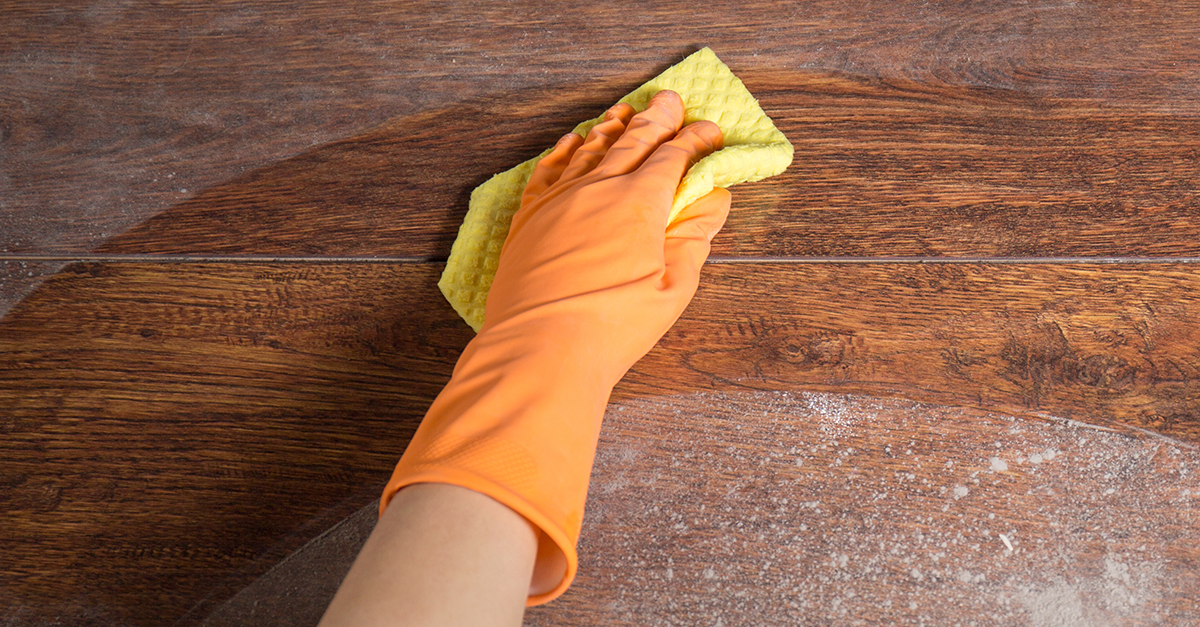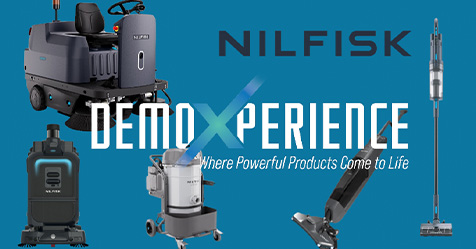Dusting can seem like a never-ending chore—one you may be tempted to skip occasionally to make time for other tasks. However, keeping up with dust removal is essential for protecting the health of facility occupants and the reputation of your business.
Facility occupants, including clients, customers, and employees, expect a clean environment. Visible dust can create a negative impression, potentially affecting business relationships as well
as employee productivity and morale.
Beyond creating an unsightly environment, dust can harbor allergens, bacteria, and other contaminants which negatively impact indoor air quality (IAQ). Inhabitants of dusty facilities are more likely to suffer from asthma, bronchitis, and other respiratory conditions, according to a study published in the International Journal of Environmental Research and Public Health. Fortunately, research published in the journal Epidemiology found that comprehensive cleaning reduces the airborne dust in facilities, which in turn, reduces nasal congestion among building inhabitants.
Start with proper training
Inadequately trained cleaning staff might overlook critical areas or use incorrect techniques, leading to inefficient dust removal. Ensure your training program covers the importance of removing dust, identifies high-dust areas, and details appropriate methods to remove dust without dispersing it into the air. Be sure to schedule regular training sessions to keep your cleaning staff updated on best practices and innovations in dust control.
Train your employees to dust from the top of a room to the bottom. That way, they have a better chance of removing dust particles that fall at each level. Finish the task by dusting the floor with a
high-quality mop that is effective in removing pesky lint.
Training is not only beneficial for workers, but also for cleaning equipment. When your workers use and maintain cleaning tools correctly, they help extend the lifespan of the equipment and
improve its overall efficiency.
Use the right tools
Since dusting effectiveness depends heavily on the tools used, invest in high-quality, sustainable mops and dusters. Consider mops that are launderable or those made from recycled materials, which make them an environmentally friendly option. Selecting mops that are third-party certified for sustainability through organizations such as Green Seal® helps ensure dusting efficiency and reduces chemical use, contributing to a healthier environment.
Prioritize specific areas
Certain facility areas tend to accumulate more dust, such as entrances, hallways, and other high-traffic areas. Don’t forget about high surfaces, like shelves, light fixtures, and ceiling fans, which are easily overlooked but can contribute significantly to overall dust levels.
Dust can interfere with the functionality of electronic equipment and ventilation systems by clogging filters and causing overheating. Dust buildup on office furniture can lead to costly repairs. Regularly dusting electronic equipment and office furniture can prolong their lifespans, saving your facility money.
Breathe freely
Training your cleaning staff to follow a regular dusting schedule, use the proper equipment, and pay special attention to high-priority areas ensures comprehensive dust control. Your dust-free facility will boost your organization’s reputation and allow visitors to breathe deeply—free from the risk of allergies or asthma caused by poor IAQ.
WHAT IS DUST?
As you vacuum and wipe dusty surfaces, you may be wondering what exactly is in your facility’s dust. The short answer is: A lot of things.
Dust is a mixture of microscopic particles of material. According to the National Geographic Society, dust can be made up of pollen, bacteria, smoke, ash, salt crystals from the ocean, and
small bits of dirt or rock, including sand. Dust can also contain tiny fragments of human and animal skin cells, pollution, and hair.
Another common component of dust is dust mite droppings and dust mite body fragments, according to the American Lung Association. Dust mites are microscopic, insect-like pests that thrive in
warm, humid settings and feed on dead skin cells or dander shed by people and animals. They often live in mattresses, pillows, carpets, upholstered furniture, and other fabric-covered items where skin cells and dander tend to accumulate.
People who are allergic to dust or dust mites have a bad reaction to inhaling proteins in dust that comes from dust mite feces, urine or, decaying bodies. Any swelling of the nasal passages caused by dust mites is considered a dust allergy.
The National Institute of Environmental Health Sciences recommends the following steps to reduce
the number of dust mites in your facility:
- Use a dehumidifier or air conditioner to maintain humidity levels at, or below, 50%.
- Encase mattresses and pillows in dust-proof or allergen-impermeable covers.
- Replace wool or feathered bedding products with synthetic materials.
- In bedrooms, replace wall-to-wall carpeting with bare floors, and remove fabric curtains and upholstered furniture, whenever possible.
- Use a damp mop or rag to remove dust. Never use a dry cloth, as it stirs up allergens.
- Use a double-layered microfilter bag or a HEPA filter in your vacuum.
- Wear a mask while vacuuming, and stay out of the vacuumed area for 20 minutes after vacuuming, to allow dust and allergens to settle.



